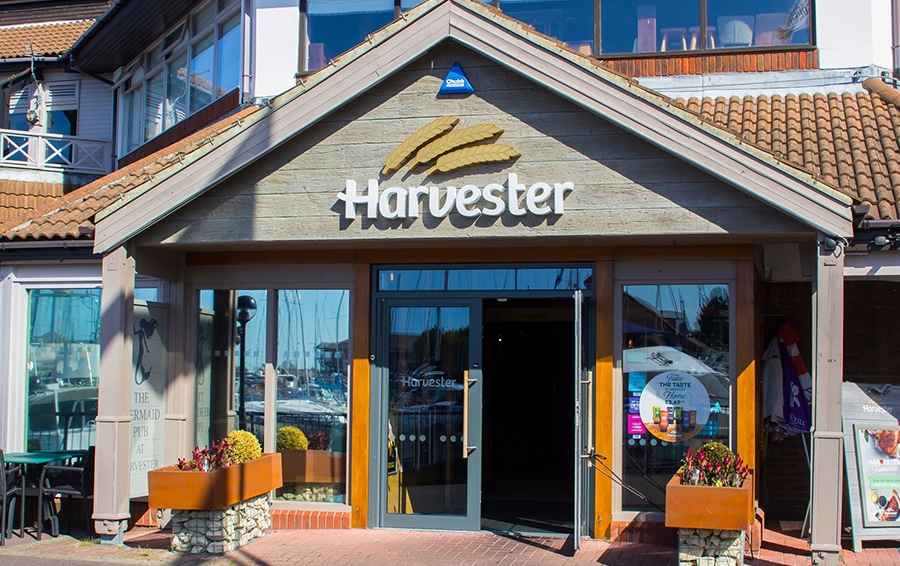Mitchells & Butlers has cut costs and carbon across its estate by embracing voltage optimisation. The project, the largest of its kind in UK history, was carried out by VO specialists Powerdown220. This article describes how Powerdown220 and Mitchells & Butlers worked together to install voltage optimisers at over 1,100 sites across the country.
Mitchells & Butlers is one of the largest operators of restaurants, pubs and bars in the UK, providing a wide choice of eating and drinking out experiences through well known brands, such as Toby Carvery, Harvester, All Bar One and Miller & Carter to name a few. The company therefore has a vast estate with over 1,600 sites. Mitchells & Butlers has also embraced a series of ambitious sustainability goals, including a commitment to achieve Net Zero emissions by 2040.
Voltage optimisation is one technology Mitchell & Butlers had previously considered, to cut both costs and carbon. In the UK, average voltage is 242v but CE marked equipment is designed to operate at 220v. Often without realising it, UK businesses are paying higher bills for excess voltage, which is also contributing to premature equipment failure.
Voltage optimisation is a transformer-based technology that lowers the voltage supplied from the National Grid to match the needs of a site and its equipment. Mitchells & Butlers had previously experimented with the technology on a smaller scale, but by 2021 a range of factors, in particular the energy crisis, had made the case for VO increasingly compelling. VO had the double benefit of cutting both costs and carbon. “Voltage optimisation was one of those projects that is at that sweet spot where it ticks both boxes,” explained Dale Fenton, energy manager at Mitchells & Butlers.
However, attempting to introduce voltage optimisation on this scale would be unprecedented. “I didn’t realise beforehand that this would be the biggest project of its kind in the UK, but that fact puts it all into perspective,” Fenton reflected. The project would also have to be delivered with minimal disruption to operations and, although a formal timeframe was not established, Mitchells & Butlers wanted as many machines installed in as short a time as possible.
Few companies could command the resources or expertise necessary to carry out a rollout on this scale in less than a year, still less put together a convincing plan to demonstrate feasibility. Mitchells & Butlers felt that Powerdown220 was the strongest candidate, with the VO specialist having impressed with the thoroughness of its planning and the promise of speed in delivery. Fenton recalled that Powerdown had a “really robust plan” and that “no one else came anywhere close to saying they could do it that quicky.”
From survey to installation
The first step in the project was a survey of each individual site across the UK, to identify which ones required optimisers. Onsite inspections were also necessary to identify potential problems, challenges or opportunities and develop a bespoke installation plan for each individual site. This was especially important as in addition to the size of the estate, there were huge variations in building type.
The survey itself was a colossal undertaking, but the process helped rule out sites where installation was not feasible from a practical or logistics point of view, or where the voltage supply was already lower than average, for example. Following the survey, approximately 1,125 sites were identified as suitable beneficiaries for VO. Combined with a small trial of VO that was funded by Powerdown220, the survey gave Mitchells & Butlers the confidence to proceed.
No sooner was the survey complete than work began on the most ambitious rollout in UK history in September 2022. Powerdown220 had designed each installation plan to try and ensure a uniform process across the vast estate. “Ideally, you wanted to try and make sure someone in Plymouth was getting the exact process as someone in Newcastle,” explained James Goodby, director at Powerdown220 and the man responsible for managing the project on Powerdown’s side.
Beginning with just five machines per week, at the height of the rollout sixty machines were being installed every week. Powerdown220 worked close with its own preferred installers, Ashcrofts, to carry out the installations. Due to the nature of these sites, installations were often carried out at night or early mornings. In total, approximately XXX voltage optimisers were installed. At the time of writing, the project is in its final stages, with only a small handful of installations left to complete.
Unique challenges
Owing to the unprecedented scale of this project, challenges were inevitable. One potential challenge both sides were aware of heading into the project was the scale of resources that would be demanded, particularly in terms of materials. Due to the cabling required, vast quantities of steel and copper had to be ringfenced. Goodby recalls the challenges in ringfencing sufficient quantities of raw materials to ensure there was no disruption to the programme.
The extra capacity required to manufacture new optimisers on this scale also needed forward planning. Powerdown220’s unique relationship with GWE, the Sheffield-based manufacturer who pioneered the introduction of voltage optimisers for the UK market, came into play. Powerdown commanded a 15-person team at GWE who were solely dedicated to this project for several months, providing M&Bs the confidence that the resources would be available, and the pace maintained.
A project involving sixty or more installations per week for several months at a time also required a large number of trained and available technicians to carry out the installations. Given the current shortage of electricians in the UK, Powerdown220’s close relationship with Ashcrofts was also key to ensure the expertise and resources were available to get the job done in the timeframe demanded.
Powerdown’s relationship with Ashcrofts and GWE reflects the Tardis-like nature of the company. Outwardly modest in size, when you step inside you find a company able to mobilise resources and expertise on a scale that no other business in the VO market can compete with. M&Bs would deal directly with a small team at Powerdown220 to provide convenience, but behind the scenes Goodby was commanding a project team of approximately fifty people.
Effective communication between Powerdown220 and Mitchells & Butlers was also essential to ensuring that when issues did arise, they could be resolved quickly, and processes put in place to prevent recurrences. Fenton jokingly recalls how, “we may as well have lived together,” at the peak of the project. As nothing on this scale had ever been attempted, it was a learning curve for both sides and collaboration and flexibility was necessary. Dale established processes to ensure that where issues did arise, the problem could be correctly identified as quickly as possible. “Where did have issues, we were able to jump on it very quickly,” he explains.
At the time of writing, the project is still winding down, so hard figures in terms of energy savings are not yet available. Powerdown220’s customers on average enjoy savings of between eight and twelve percent on their energy bills. Fenton reports that M&Bs are ‘‘definitely seeing energy reductions across the estate as a whole.’’ With energy costs potentially set to rise again, the pub chain has future-proofed itself ahead of the curve.
In addition to the savings, M&Bs are also proud of the project from a sustainability perspective. ‘‘This is just one of a number of initiatives we have implemented over the last few years which collectively, has resulted in the business being awarded Best Sustainable Pub Company at The Publican Awards in 2023,’’ Fenton added.
The team at Powerdown220 are equally pleased with the outcome. ‘‘We are enormously proud to have completed a project of this scale and delighted that M&Bs placed their trust in us,’’ Goodby commented. ‘‘The experience of successfully completing this rollout in such a short period of time has also provided unique opportunities for learning, which we can now carry forward.’’
As there is no sign of the energy crisis abating, the potential opportunities presented by VO may mean that there are other large projects on the horizon, although it is unlikely that any will match this project for sheer size. “We now have unique experience of managing projects on this scale,” Goodby concluded. “There are other companies out there that might say they can do this sort of thing, but so far we are the only ones who have actually managed to do it.”






